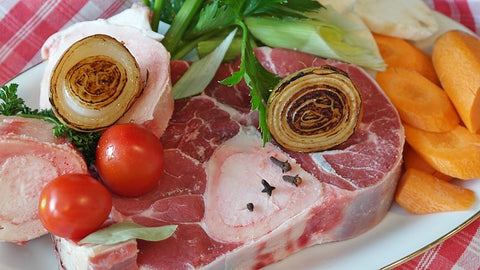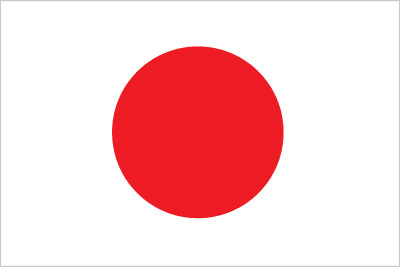
The difference between Japanese soup stock and fish broth (stock) you can buy in German supermarkets
Dashi is one of the essential ingredients as one of the basic seasonings of Japanese cuisine.
It can be used for miso soup, simmered dishes, oden, warm soba and udon soup, and even curry, so it is very useful.
It's light, small, and very convenient, but sometimes it's too convenient to run out of stock.
If you live in Japan, you can easily go to the nearest supermarket to buy it, but if you live in Germany, there are cases where you don't change the soup stock in your neighborhood, which is a problem.
Have you ever had the experience of being forced to use the local fish bouillon that you can buy at your local supermarket in Germany?
[Japanese soup stock VS German fish bouillon] I will explain the difference!
First of all, what is the difference between Japanese dashi stock and bouillon sold in Germany and Europe?
In this article, I will explain the bouillons you can buy in Europe and tell you the difference.
Also, I will explain the story of miso soup made with fish broth in this article.
Japanese soup stock

Since ancient times, Japan has lived as an island country, enjoying the blessings of the sea.
Dashi has a long history in Japan, and it is said that fish and other ingredients have been boiled and eaten since the Jomon period.
From the literature, it is believed that bonito and kelp were also used as offerings in the Nara and Heian periods.
There is a description of "dashi" in the literature of the Warring States period, and we can see that it is deeply connected to Japanese history.
By the way, there are various types of Japanese dashi, such as bonito, kelp, shiitake mushrooms, shellfish and crab, as well as chicken bones and pork, which are often used for ramen.
However, when it comes to everyday ingredients, bonito stock is the most popular, and kelp and shiitake mushrooms are also commonly used by some people.
Dashi is basically a momentary process that extracts the essence in a few minutes, but before making dashi, ingredients such as dried bonito, dried shiitake mushrooms, and kelp require a lot of time and effort in the previous process.
Japanese dashi, with its sharpness and condensed umami, is indispensable in cooking Japanese food, and it can be said to be the foundation of Japanese food as it brings together the overall taste and creates harmony.
European broths and fonds

Of course, Europe also has food equivalent to Japanese soup stock.
There are two equivalents of dashi in France: bouillon and fond.
Phong is used as a source.

For example, even those who are unfamiliar with French cuisine may have heard the name "fond de veau".
Fond de veau is a type of soup stock made by simmering veal, bones, potherbs, etc. for a long time.
Fond de Veau can be used as a sauce for steak, hamburger, meuniere, etc., as well as a beef stew ingredient.

On the other hand, bouillon is an ingredient used when making soups and potages.

Bouillon is French, but it is called Brodo in Italian and Broth or Soup stock in English .
Regarding German, it is written as brühe in German.
The main flavor of pho is meat, but bouillon has a strong vegetable flavor and is gentler than pho.
There are vegetable bouillons, but there are chicken, beef, and fish bouillons, and chicken bouillon seems to be the most common.
As for how bouillon is made, the process is very different from that of Japanese dashi.
While Japanese dashi takes a lot of time and effort to make the ingredients, it only takes a few minutes to extract the essence.
In comparison, bouillon is made by simmering fish, meat, flavored vegetables, etc. for a long time, instead of taking the time and effort in the previous process like Japanese soup stock.
Bouillon is characterized by its gelatinous umami and richness, and when it cools, this gelatinous substance solidifies, making it one of the main salty ingredients in meat dishes and soups.
Bouillon readily available in Germany

There are several manufacturers selling this bouillon in Europe, but two famous ones are "Maggi" and "Knorr".

Brunosingu, CC BY-SA 4.0 <https://creativecommons.org/licenses/by-sa/4.0>, via Wikimedia Commons
Maggi is a brand owned by the Swiss food company Nestlé, while Knorr is a brand that originated in Germany but is now owned by Unilever, a multinational company that includes British and Dutch companies.

Unilever, CC BY-SA 3.0 <https://creativecommons.org/licenses/by-sa/3.0>, via Wikimedia Commons
I see both in Germany, but personally I have the impression that I see Knorr more often.
I've used both Maggie and Knorr, and I don't see much of a difference, so it doesn't matter which one you buy.
The Difference Between Japanese Dashi and German Fish Bouillon: Miso Soup

Well, there are liquid types of bouillon, but solid ones are common, and you can buy 4, 8, or 12 pieces for less than 1 to 2 euros.
Miso soup consists of dashi stock and miso as the minimum ingredients.
I used to cook miso soup with fish bouillon, but I felt a slight difference in taste.
In the first place, if you dissolve fish broth in hot water, you will get a fragrant smell like niboshi ramen soup.
When I put miso in it, I felt that it was saltier than miso soup made with Japanese dashi.
The resulting miso soup tasted good enough to eat, but I think Japanese people might find the taste strange.
By the way, if you check the ingredients of dashi and fish bouillon, you can see the difference.
As an example, let's compare the ingredients of Ajinomoto's Hondashi and Knorr's fish bouillon.
If you look at the raw materials of Ajinomoto on the website , it will be as follows.
" Salt (manufactured in Japan), sugars (sugar, lactose), flavor ingredients (bonito powder, bonito extract), yeast extract, yeast extract fermented seasonings/seasonings (amino acids, etc.) "
On the other hand, if you look at the raw materials of Knorr's fish bouillon from the website , it will be as follows.
"Iodized salt, flavors (E621, E635), fully hydrogenated palm oil, cornstarch, hydrolyzed vegetable protein, palm oil, approved flavors (including fish, shellfish, molluscs, eggs, milk, celery), cod. of fish powder (including crustaceans and mollusks), garlic oil (including crustaceans), onions, spices, sugar, garlic, citric acid."
As you can see, fish bouillon uses more ingredients, and the salt content per 100g is about 43g for Hondashi and about 50g* for fish bouillon. If you use , you can see why the saltiness is strong. (From the website, sodium 19701 (mg) x 2.54 ÷ 1,000 = 50.04)
summary
As I wrote above, fish bouillon is suitable for ramen soup, but when cooking miso soup and other Japanese dishes, Japanese dashi is more familiar and nostalgic than fish bouillon.
In conclusion, Japanese dashi is the best choice for Japanese cuisine, although it can be used as a substitute.
When making Japanese food, we highly recommend using Japanese dashi stock.



